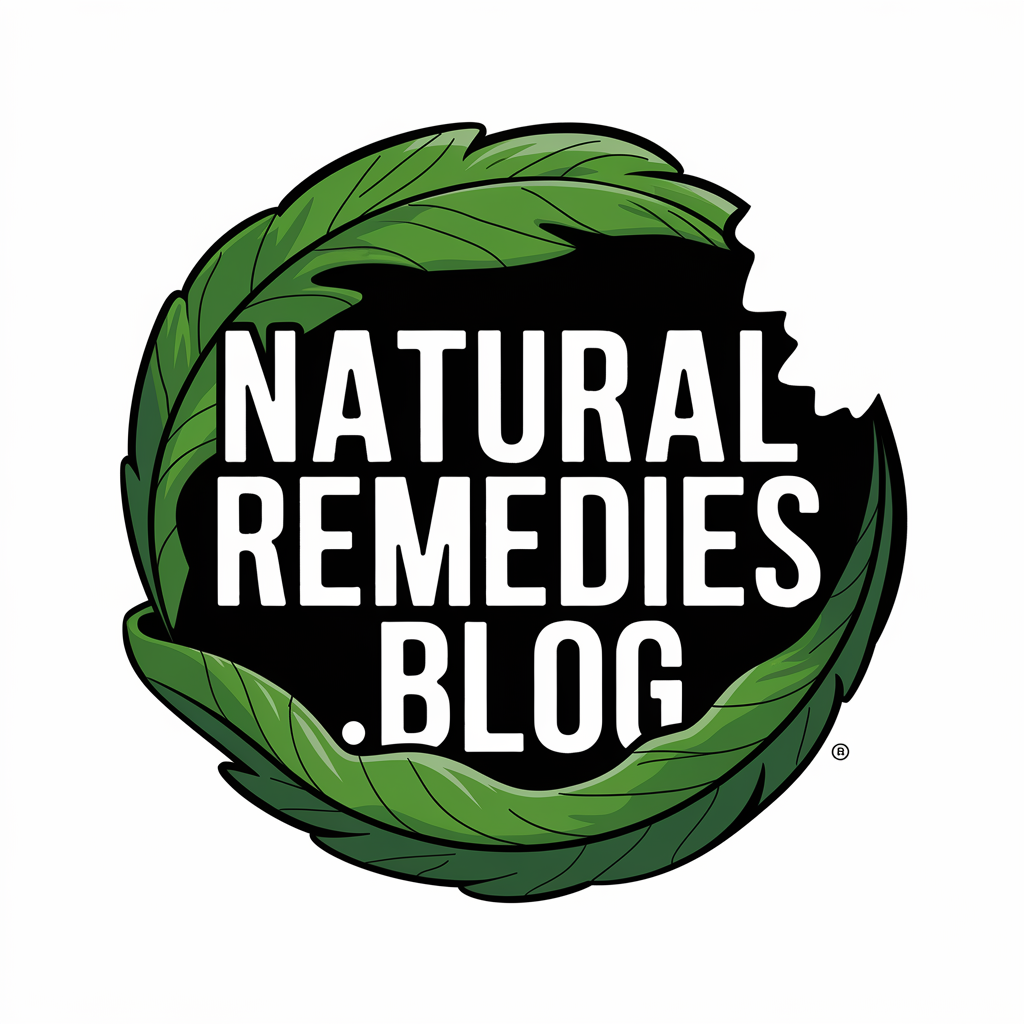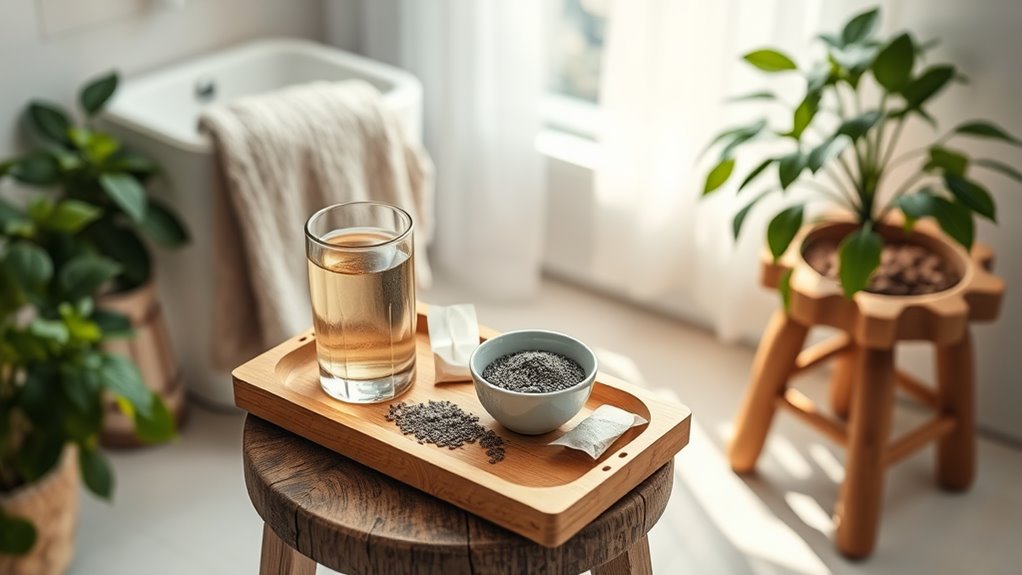What Helped Me Most During My Last Stomach Bug
During your stomach bug, you’ll want to stop solid foods for 6 hours and stick to clear liquids, sipping water or electrolyte solutions every 15 minutes. Wait 30 minutes after vomiting before trying fluids again. Keep anti-nausea medications handy, and use ginger tea to ease discomfort. After 12-24 hours, introduce the BRAT diet (bananas, rice, applesauce, toast) gradually. Following a strategic recovery protocol can significantly reduce your illness duration and prevent complications.
The First 24 Hours: My Emergency Action Plan
When you first notice symptoms of a stomach bug, immediate action can prevent dehydration and minimize illness severity.
Stop eating solid foods for 6 hours and switch to clear liquids only. Start with small sips of water, electrolyte solutions, or clear broth every 15 minutes. If vomiting occurs, wait 30 minutes before trying fluids again.
Among proven stomach bug remedies, the BRAT diet (bananas, rice, applesauce, toast) can help once you’re able to tolerate food.
Keep a bucket nearby, stay close to a bathroom, and rest in a semi-upright position to ease nausea.
Consider running a humidifier to maintain optimal humidity levels between 30-50% for respiratory comfort.
Monitor your temperature and stay in contact with your healthcare provider.
Staying Hydrated: Beyond Plain Water
Maintaining optimal hydration during a stomach bug requires more than plain water alone to replenish lost electrolytes. You’ll need to consume sodium, potassium, and glucose to prevent dehydration.
Mix oral rehydration solutions like Pedialyte or create your own by combining 1/2 teaspoon salt, 6 teaspoons sugar, and 1 liter of water.
Sip clear broths every 15 minutes to restore sodium levels.
Incorporate natural electrolyte sources such as coconut water, which contains potassium, or diluted fruit juices for glucose.
If you can’t keep fluids down for more than 4 hours, seek immediate medical attention.
Try ice chips if you’re having difficulty keeping other liquids down while recovering.
Gentle Foods That Settled My Stomach
Once you can tolerate fluids, introducing the right solid foods becomes the next step in recovery. Start with easily digestible options that won’t aggravate your gastrointestinal tract.
| Food Type | Benefits | When to Introduce |
|---|---|---|
| Plain Toast | Absorbs excess acid | 12-24 hours after illness |
| Bananas | Restore potassium | When holding down liquids |
| White Rice | Binds stool | 24-36 hours post-symptoms |
| Applesauce | Provides pectin | After tolerating toast |
Progress gradually through these bland foods, monitoring your body’s response. Don’t rush to normal eating – each food should be tested individually for tolerance before advancing your diet. Following the clear broth guidelines can help maintain essential minerals while transitioning to solid foods.
Essential Over-the-Counter Remedies
When battling a stomach bug, you’ll want to keep two essential types of over-the-counter medications on hand: anti-nausea drugs like Dramamine or Bonine, and oral rehydration solutions such as Pedialyte or DripDrop.
For nausea relief, you can take meclizine or dimenhydrinate tablets every 4-6 hours as directed on the package to help control vomiting and reduce queasiness.
To combat dehydration, you’ll need to regularly sip electrolyte-balanced solutions that contain the proper ratio of sodium, potassium, and glucose – avoid sports drinks which often contain too much sugar and not enough electrolytes.
Anti-Nausea Medications That Work
Several effective over-the-counter medications can help control nausea during a stomach bug infection. These anti-emetic medications work by blocking specific receptors in your brain’s vomiting center or by calming your digestive system.
-
Dimenhydrinate (Dramamine) targets both the vestibular system and the vomiting center, providing relief within 30-60 minutes.
-
Meclizine (Bonine, Antivert) offers longer-lasting protection against nausea with fewer drowsy side effects.
-
Bismuth subsalicylate (Pepto-Bismol) coats the stomach lining while reducing inflammation and diarrhea.
Monitor your symptoms and don’t exceed recommended dosages. If vomiting persists beyond 24 hours, consult your healthcare provider immediately.
Quick Rehydration Solution Picks
Maintaining proper hydration becomes critical during a stomach bug, as your body rapidly loses fluids through vomiting and diarrhea. You’ll find reliable rehydration solutions at most pharmacies, including Pedialyte, DripDrop, and Liquid I.V.
These solutions contain precise electrolyte balances of sodium, potassium, and glucose that help your body absorb water more efficiently than plain water alone.
For a cost-effective alternative, mix 6 teaspoons of sugar and 1/2 teaspoon of salt in 1 liter of water. If you can’t keep liquids down, try freezing the solution into ice chips to suck on gradually.
Natural Solutions From My Kitchen
Your kitchen contains powerful natural remedies that can help combat stomach bug symptoms, including ginger tea’s ability to reduce nausea and settle your digestive system.
Apple cider vinegar’s antimicrobial properties can help restore your gut’s pH balance and combat harmful bacteria when diluted with water.
Peppermint, whether consumed as a tea or through essential oil aromatherapy, can relax your digestive muscles and ease stomach cramps associated with gastroenteritis.
Similar to how green tea polyphenols protect skin cells, they can also help reduce inflammation in your digestive tract during illness.
Ginger Tea For Relief
Fresh ginger tea can effectively reduce nausea and stomach discomfort during a gastrointestinal infection. The active compounds in ginger, particularly gingerols and shogaols, work as natural antiemetics and anti-inflammatory agents.
You’ll need these components for optimal therapeutic benefit:
- 2-inch piece of fresh ginger root, thinly sliced
- 2 cups of filtered water, brought to a boil
- 1 teaspoon of honey (optional, for palatability)
Steep the ginger in boiling water for 10-15 minutes, strain, and sip slowly.
For maximum effectiveness, consume 3-4 cups throughout the day, spacing them between meals to aid digestion and reduce inflammation.
Apple Cider Vinegar Benefits
While the effectiveness of apple cider vinegar (ACV) hasn’t been extensively studied for stomach bugs, its natural antimicrobial and pH-balancing properties can help alleviate gastrointestinal distress.
You’ll want to dilute 1-2 tablespoons of raw, unfiltered ACV in 8 ounces of warm water. Sip this mixture slowly throughout the day, especially before meals.
The acetic acid in ACV can help neutralize harmful bacteria while supporting beneficial gut flora. If you’re experiencing nausea, add a teaspoon of honey to make the solution more palatable.
Don’t consume undiluted ACV, as it can irritate your esophagus and worsen stomach discomfort.
Peppermint’s Soothing Properties
Known for its remarkable calming effects on the digestive system, peppermint contains menthol and rosmarinic acid that can help reduce inflammation and ease stomach cramps during a bout of gastroenteritis.
When you’re battling a stomach bug, peppermint can provide relief through multiple mechanisms:
-
Antispasmodic properties relax the smooth muscles of your gastrointestinal tract, reducing nausea and vomiting.
-
Natural antimicrobial compounds help combat pathogenic bacteria that may be causing your illness.
-
Menthol activates cold-sensitive receptors, creating a cooling sensation that can temporarily numb digestive discomfort.
To maximize benefits, steep fresh peppermint leaves in hot water for 5-10 minutes or use high-quality peppermint oil capsules.
Rest and Recovery Strategies
Since your body needs significant energy to fight off a stomach virus, proper rest becomes a critical component of your recovery protocol.
Aim to sleep 8-10 hours nightly and take short naps during the day when fatigue sets in. Keep your bedroom temperature between 65-68°F to prevent night sweats.
When you’re not sleeping, maintain a semi-reclined position to reduce stomach acid reflux. Avoid screens an hour before bedtime, as blue light can disrupt your sleep cycle.
If insomnia occurs due to nausea, try deep breathing exercises or gentle meditation. Don’t rush returning to normal activities until symptoms subside completely.
When to Call the Doctor
Although most stomach viruses resolve on their own within 72 hours, certain symptoms require immediate medical attention.
During my recent bout with a stomach bug, I learned to recognize critical warning signs that warranted calling my doctor.
- Severe dehydration symptoms, including dark urine, excessive thirst, and dizziness upon standing
- Blood in vomit or stool, which could indicate a more serious underlying condition
- High fever above 102°F (39°C) that persists for more than 24 hours
I discovered it’s essential not to wait if you’re experiencing any of these symptoms, as early intervention can prevent complications and speed up recovery time.
If you experience chronic constipation symptoms lasting more than three months, including persistent bloating and incomplete bowel emptying, consult a healthcare professional immediately.
Preventing Spread to Family Members
When a stomach virus enters your household, implementing strict preventive measures becomes crucial to protect other family members from infection.
Isolate the sick person to a designated bathroom and bedroom.
Disinfect high-touch surfaces with chlorine-based cleaners every few hours, including doorknobs, light switches, and remote controls.
Practice rigorous hand hygiene: wash with soap for 20 seconds or use alcohol-based sanitizers.
Don’t share towels, utensils, or personal items.
Use separate laundry baskets for contaminated items and wash them in hot water.
Keep toothbrushes separated and replace them after recovery.
Post-Recovery Diet Tips
You’ll need to reintroduce foods gradually after a stomach bug to prevent overwhelming your digestive system.
Start with clear broths, plain toast, bananas, rice, or crackers – foods collectively known as the BRAT diet in clinical settings.
As your symptoms remain stable for 24 hours, you can begin incorporating lean proteins and well-cooked vegetables while monitoring your body’s response.
Gradual Food Reintroduction
Once your stomach has settled and vomiting or diarrhea subsides, begin reintroducing foods gradually over 24-48 hours to prevent gastrointestinal distress.
Start with clear liquids before advancing to more substantial options.
-
Begin with small portions of bland, easily digestible foods like bananas, rice, applesauce, and toast (BRAT diet) every 2-3 hours.
-
Progress to low-fat proteins such as boiled chicken or fish, accompanied by well-cooked vegetables without seasoning.
-
Slowly incorporate dairy products, starting with yogurt containing live cultures to help restore gut flora.
Monitor your body’s response between each food introduction and return to blander options if symptoms recur.
Safe Starter Meals
Choosing appropriate starter meals during post-stomach bug recovery requires careful consideration of portion sizes and ingredient complexity. You’ll want to begin with easily digestible foods that minimize gastrointestinal stress while providing essential nutrients.
| Food Type | Recommended Portions |
|---|---|
| Plain Toast | 1-2 slices |
| Bananas | 1/2 – 1 medium |
| Rice (white) | 1/2 cup cooked |
Start with room temperature foods to prevent digestive shock. Progress from clear broths to bland solids over 24-48 hours. Avoid dairy, spicy foods, and high-fiber items until your digestive system shows consistent stability. Monitor your body’s response to each new food introduction.
Creating a Stomach Bug Emergency Kit
Assembling a dedicated stomach bug emergency kit ensures quick access to essential supplies when symptoms strike.
You’ll want to store these items in a waterproof container that’s easily accessible in your bathroom cabinet or bedside drawer.
-
Over-the-counter medications: Pepto-Bismol tablets, anti-nausea medicine, and oral rehydration solutions like Pedialyte
-
Comfort supplies: Digital thermometer, heating pad, disposable emesis bags, and clean washcloths
-
Hydration essentials: Electrolyte powder packets, ginger tea bags, and a dedicated water bottle with measurement markers
Keep your kit stocked by checking expiration dates quarterly and replacing items as needed.







